The European sea bass is a worthy target for fly-fishers, and in spite of being a lot less common than its American kin the striped bass, it's quite common along the North Sea and Atlantic coasts in Europe.
The European Sea bass
is the smaller version of the world famous Striped Bass aka the Striper.
Its domain reaches from northern Morocco to halfway of the British Isle. The bass is a seasonal visitor around the Dutch coast and arrives as early as in May but will be there in greater numbers at the end of June. The spawning period is around May when water temperatures reach 12 degrees Celsius.
Our own bass
can reach a maximum length of 100 cm (almost 40 inches) and a weight of 15 kg (33 lbs.) whilst the striper can reach lengths of 130 cm or more (50 inches). Not only do the Americans trump us over the size but also on the availability. The striper has had a protected status for a couple decades after being wiped out almost completely. Unfortunately the European bass has been fished for on a large scale and stocks are dwindling. We are still hoping for a strict set of regulations for the commercial fishery and a bag limit for sports fisherman.
Every season
when the days of June get longer, we anxiously gaze towards the sea. Most other fish targets like carp or pike are put on hold, gear will be made ready and flies are tied.
Not many anglers take on the challenge of catching bass. It's not a fishery for everyone. It takes persistence for an angler to finally connect with a bass and a bucket-load of flies. I mean a whole lot!
Don't see it as a loss but as a necessary sacrifice to the gods of the sea. You win some, but you loose even more.
And is it worth it, you ask. Definitely YES!
It is a highly addictive fish. On the fly difficult to catch but when you do, the satisfaction is so much more greater than with every other species around here. You have to spend the necessary time on the water and it is all about the right feeling and concentration. For a beginner there is nothing more daunting than standing at the seashore and seeing that great expanse of water and not having the faintest idea of where to start fishing.
The bass congregate
on our shores in the late spring and early summer days. Spawning is over and they start seeking out the estuaries in order to find food and spend the summer making a good living of the rich underwater bounties.
Looking at the Dutch coastline you can see that the whole of the south is one huge estuary system, it forms the province of Zeeland. Several major rivers like the Maas, Waal and Rhine spill out into the sea coming from as high as the Alps. The Zeeland estuary is the only large estuary from the north coast of France till the beachy shores in Denmark. It is this geographical hotspot that creates an excellent feeding place for the bass and an even more excellent fishing area for us.
Zooming in
on the estuary of Zeeland and the South Holland there are many different types of water. The most important structure you will see and the fish will encounter is the huge dam system that protects the lands from flooding. In many places fish can pass but in other places the fish will have to swim around these structures.
The most productive places are without doubt the Rotterdam harbor area and the Oosterschelde, but at times the Wadden Island up north will give up its treasures to those who go and look for them.
Fishing for sea bass
is highly influenced by meteorological and tidal changes. Before heading out it is just as important to check the weather and the tide as having a well stocked flybox and the right fly-line.
Weather wise it is more a factor for the flyfisherman. Heavy winds make casting difficult but more important it tends to make the water quite murky which makes fishing obviously more difficult. A nice soft westerly wind with partial cloud cover is ideal, but a nice summery day with a southerly wind makes a great early morning and evening fishery. Easterly and Northerly winds winds aren't favorable for the shore anglers. Fish tend to head out deeper and further away from shore under those conditions.
Coastal fishermen
will always be divided in those who prefer the rising tide and those who swear by a falling tide. The most important deduction in these statements is that water has to flow.
Bass will come into the harbors and are triggered to go hunting by the rising tide. With the falling tide they again hunt and migrate back to their resting places at low tide. Bass mostly hunt in small groups and hang out in deeper pools or rocky structures when it's low tide. So both tides can be productive, a couple of hours before high tide and after are excellent.
During low tide it's great to seek out possible new fishing grounds. Look out for underwater jetties, sandbanks and oyster banks. Everything that creates turbulance in the water with a rising or falling tide is great. At these spots prey get into trouble and become easy picking for bass. On the other hand I prefer a rising tide since the influx of seawater tends to push away the sediment that is flushed out from the rivers and makes the water more clear.
Bass typically
aren't picky feeders. Their mainstay diet by far is crabs. If you take a fish home and clean it, you will be amazed how many tiny crabs are filling up its stomachs contents. Sometimes I wonder why we even fish with streamers but they do eat fish, no doubt about that.
Bass, especially bigger ones prefer mackerel, herring, sprat and sand eels and you do wise to imitate those fish when tying streamers. When there is a mackerel blitz in the surface you can be sure that underneath that school of mackerel big sea bass will be having their own feast. During the early months of the season one should start with smaller flies and during the summer months to autumn one can use bigger flies.
Gear can be
as varied as the places we fish. But as a start a good 8 weight with a bit of backbone would be a good start. When fishing from the bellyboat or a kayak a 10 weight could give you that extra edge when fighting a large bass fleeing for its rocky shelter.
Don't go overboard with the reel if you are just looking for a sea bass outfit. Bass don't tend to make long runs and you don't fish light tippet so drag setting is not a critical point. A composite or all plastic reel can work just as well as a high end bonefish reel.
Lines are probably the most important assets in your arsenal. It's important to get the fly to where the fish is. Pass a fly close by to a bass and it's triggered to hit your fly, pass a fly too high over a bass and your changes of a bite will be minimal.
Getting down is the general rule and since the fishing is always done in tidal movement you will need a sinking line. Fishing the Dutch harbor area, the best all round fly line would be a di3 sinking line. Other places a di5 or even a di7 is needed (he number indicates the sink rate in inches per second). When fishing from the belly boat close to the jetties and piers you will need heavy sink lines to get the fly immediately down between the rocks before it is washed out with the tide.
It's a game of letting the fly dance between the crevices of the blocks and getting down as fast as you can. The difference between having success or having a fishless time on the water is most often determined by the accuracy you can place the fly between the blocks. If it falls short of the structure the fly will be to far away from the ambushing fish when it comes down to the bottom.
At the business end
of the fly line there is the leader and fly. For a leader a 15 to 20 pound (0.40-0.45mm, about 0.015 inches) fluorcarbon piece of 150-180 cm (or 6 feet) will suffice. Bass hit the fly hard and thinner tippets can and will break. Almost every time you'll feel a take you mistake it for a hook up with mother earth and every time you connect with the bottom…… Fluorcarbon is much tougher when it comes into contact with rocks and oysters. If there is a small tear in a nylon leader it will break instantly. I can still recall the bass I caught from the kayak that came fighting in the surface and skated over 3 large concrete oyster covered blocks trying to get rid of the fly. In the end I landed the fish with more than half of the leader in shavings, with nylon that bass would have been a loss.
Flies can be made
as difficult as you want or as simple. It is the presentation that counts and the location where you fish that is more important.
Baitfish imitations such as deceivers, hollow flies and all of Popovics striper patterns are great. So are epoxy sand eels for sandy bottoms.
For me it is just one fly and usually in just two or three color schemes. Nothing more or nothing fancy in my fly box.
At the beginning of the season I tie a buggerbeast box full of Enrico Pugslisi streamers in colors gray, golden olive and black/purple for murky waters. Length of the streamer varies a bit during the course of the season, at the beginning smaller flies, but when the fish start feeding heavily before heading south I like to use bigger flies up to 15 cm or 6 inches.
My preferred hook is the Gamakatsu SC 15 or the Gamakatsu F314 in size 2/0 and 3/0. Off course there is no reason not to use circle hooks. Especially when you're not familiar with new fishing grounds, it can save you from getting snagged. Do not forget to take a hook hone with you!
When all the gear
is ready and the location is chosen just head out and start fishing. In the first minutes to hours it is good to get a good "mind" visualization of the bottom, try to locate holes, large rocks and spend extra time fishing these underwater structures. Count the seconds before retrieving your fly line and when there is no hook-up with the bottom add another second and so on.
I prefer short calm retrieves or a bit faster when fishing shallow water of course. No double-handed rolly polly striper retrieve is necessary for sea bass. Stay in contact with your fly line and let your rod tip follow your line as the current takes it. Sweep the fly at the last second and hold it still just before taking it out of the water. Get into the zone and be focused. Most of my strikes come when I am totally concentrated and I can almost see the fly going through the water column. Pay extra attention to tidal lines and currents. With the incoming tide you will see current lines passing upstream and these currents bring in new fish that follow the mass of water going inland.
As long as
the fly is in the water and it has some natural presentation there will eventually be a bass that will hit your fly with incredible force. Strip striking will often not be necessary since they turn away after the take and hook themselves.
After the take, the fish will want to be going down to the bottom. That's were an 8 weight and a stiff brake will come in handy. If you let it run too deep you often end up with a broken leader from chafing away on the oysters and rocks. Keep the pressure on and don't be afraid of a break off, the leader will hold.
Once you have pulled the fish up to the surface even small bass will head thumb ferociously and up a good fight. Since it is a bass, you can safely land it by gripping it in its mouth. But always ensure that you don't lift it up by the lips, always have your other hand underneath its belly for support.
Take the photo
and put it back in its watery world. Bass are heavily fished for by commercial fisherman and being sport fishermen we would love to see tougher rules for the protection of the species in European waters. Every sea bass fisherman dreams of the huge numbers of striped bass that they have across the Atlantic, so lets aim for that!
- Log in to post comments

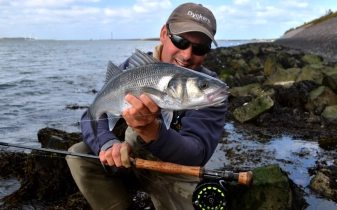
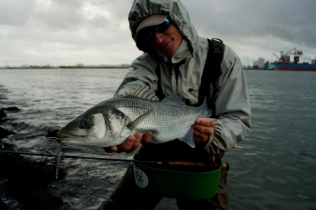

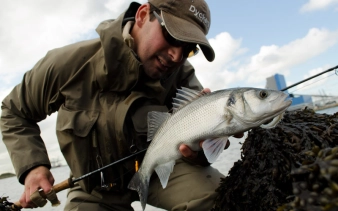
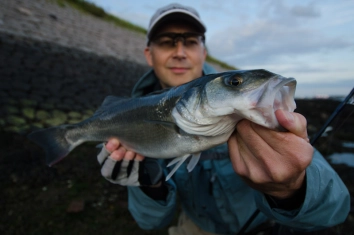

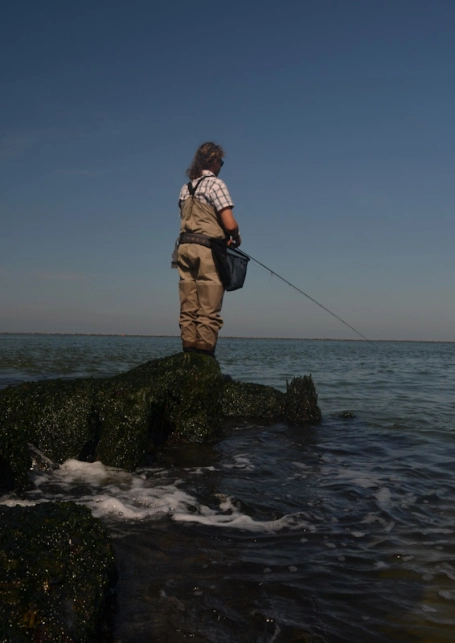
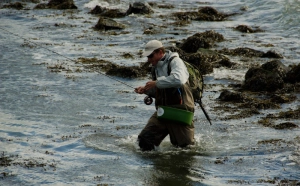
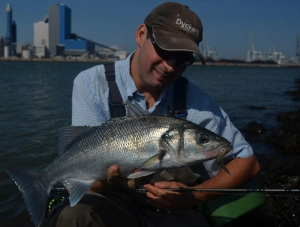
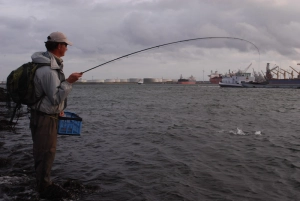
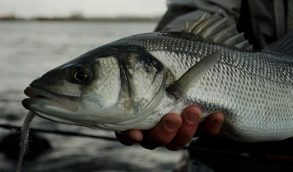
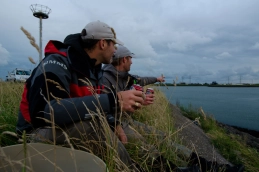
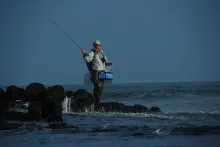
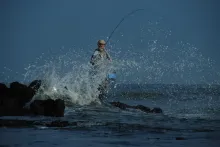
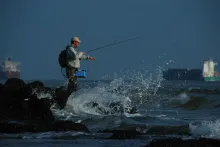
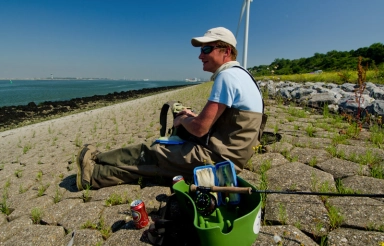
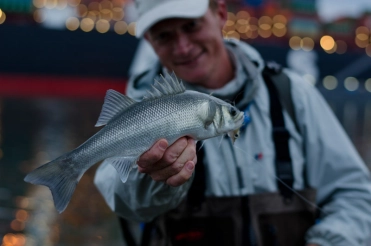
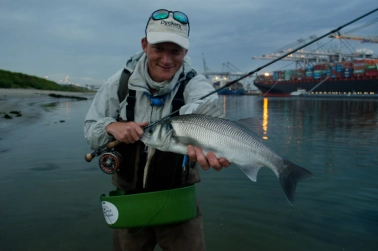

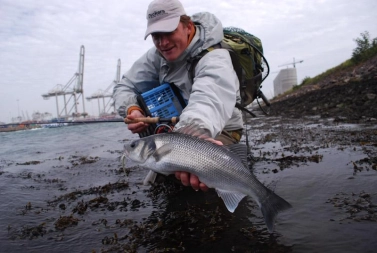
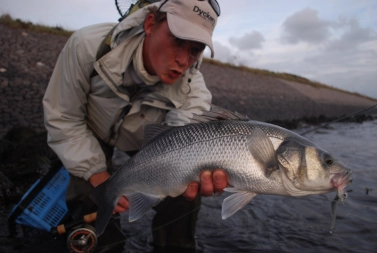
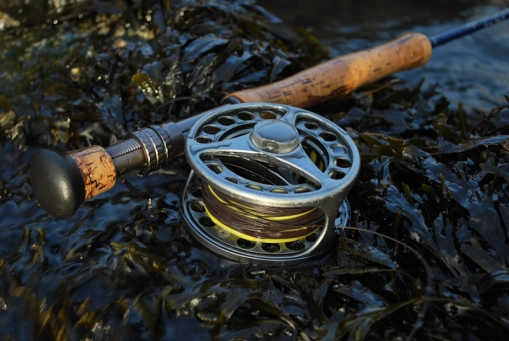


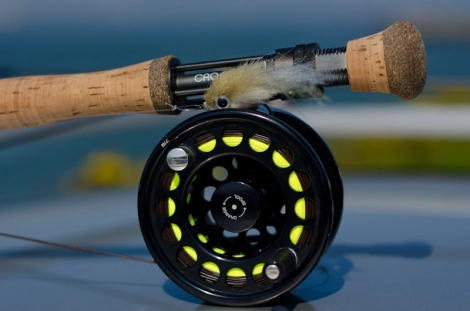
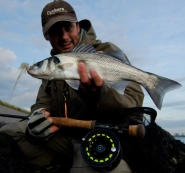
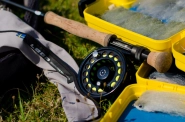
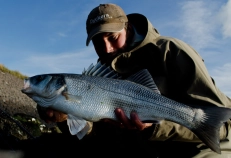
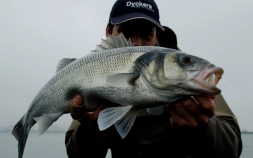
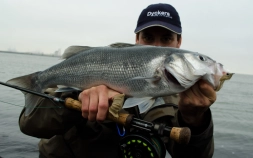
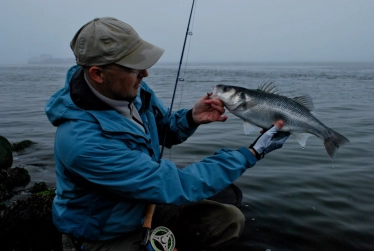
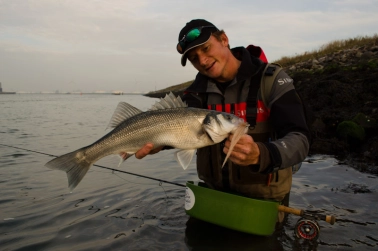
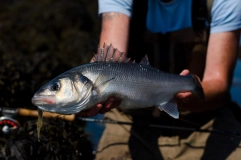
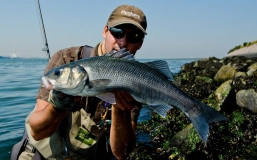

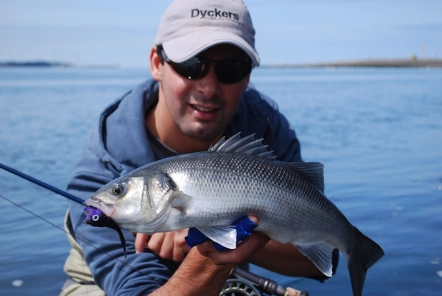
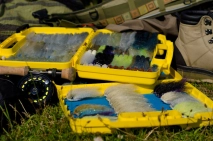

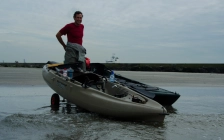
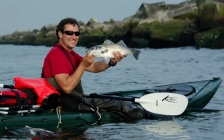


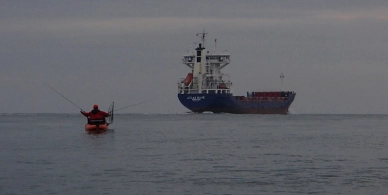
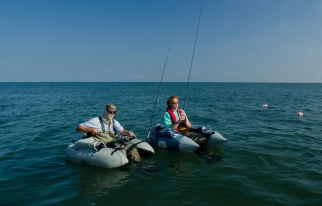
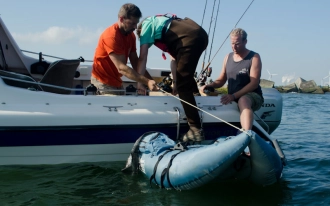
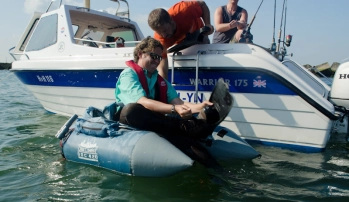

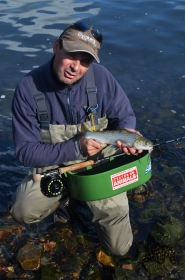
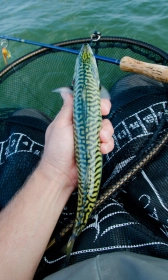



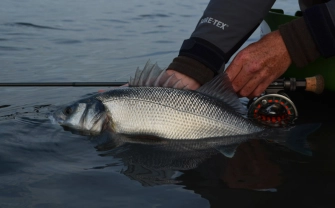



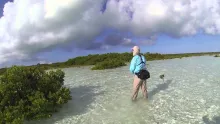
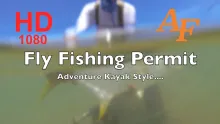
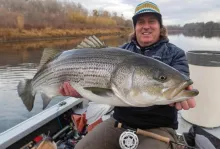
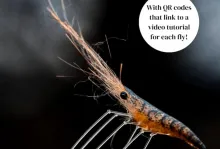
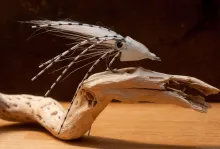

My name is Mark. I w
My name is Mark. I will be heading to Belgium in July to see my Fiance. I am an East coast Surfcaster. Mid to late july I will be north of La Rochelle, France. Her family and I are camping somewhere close to the coast. I am bringing my fishing stuff, 8'6" rod 15 lb line on a spinning reel and some of my plugs yozuri, sp minnow, etc. I tie some good sand eel flies and will have plenty of them. I'd be stoked to fish with someone.
Haven't been here in
Haven't been here in awhile but glad I checked in. That was a WOW presentation! Hope that the future for this fish becomes better.
Gregg
Thanks! Very useful
Thanks! Very useful indeed
Thank you for your k
Thank you for your kind words. It's midwinter now and I am looking foward to the warm days off spring. You are a very lucky man Flavien to live in Normandy, much longer seabass season! I tried to fish for seabass in Morbihan, Brittany some time ago but not much more than a few juveniles came to hand, but stunning surroundings there. Hope to visit the french coast again for seabass.
cheers
Keep up the good wor
Keep up the good work Brian!!
Kind regard to Edwin as wel.
Bart
hello, I like your a
hello, I like your article, I am also sea bass fisherman. I practice this technique in France in Normandy near Cherbourg with my boat.
Unfortunately, this is a fish Menasse overfishing in our waters.
hope to see you read
flavien
That was an awesome
That was an awesome read and some great pictures with tons of information.
Thanks Joseph
Awesome Post!
Thanks Brian for this awesome post, it seems it keeps bringing in visitors, even if 4 years have passed.
Nothing can pay knowledge achieved over the years and then passed to others in a few moments.
Despite fishing for Seabass as long as I can remember, there's always things to learn if you pay attention, so thanks once again.
By the way, If you come to the Algarve (southern Portugal) let me know and I will be pleased to cast some flies with you.